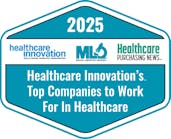Advancements in electrophysiology continue but with few solutions to reduce costs
The Heart Rhythm Society’s 40th Annual Scientific Sessions (May 8-11, 2019 in San Francisco, CA.) gathered technology leaders, clinicians, scientists and lab leadership in electrophysiology (EP). The field, which addresses atrial fibrillation (AF) and similar diagnoses, represents one of the fastest growing – and one of the most expensive – service lines in U.S. hospitals. The pace of introduction of new technologies is staggering, and this annual flagship conference allows us to study both rapid advancements in technology—and the cost pressure that such new technologies place on supply chain leaders and other hospital administrators.
At the conference, in scientific sessions as well as on the exhibition floor, exhibitors and clinicians presented more-advanced high-resolution mapping techniques, discussed how to tackle persistent long-standing AF, and introduced more-impressive ablations tactics and techniques, as well as a number of refinements to the mapping systems. These are all important technology and procedure technique advancements in a field plagued by a lack of consistent procedure protocols (which challenges procedure efficacy) as well as an under-penetrated patient population. In fact, I heard one participant saying that AF ablation has achieved less than 20 percent penetration in the U.S., which means that with more access to treatment, the advanced technology could help a lot more patients.
A blend of new and existing technology
Heart Rhythm Society’s Scientific Sessions didn’t disappoint in terms of the massive presence of the largest technology leaders in the space: Abbott (St. Jude), Biosense Webster, Boston Scientific, Medtronic, and Philips. The combined footprint of the displays presented by these five global giants was roughly equal in size to the entirety of the footprint of the many small exhibitors showcasing their new (and often not commercialized) technology and service solutions.
Abbott displayed its Advisor HD mapping catheter, which was launched shortly before Heart Rhythm Society 2018. Biosense Webster focused on its Vizigo bi-directional guiding sheath, designed for use with the company’s Carto 3 system, which was also launched in the spring of last year. In other words, the technologies we saw in the industry leaders’ exhibits were generally not new or revolutionary. However, R&D is cyclical, and I believe this simply means we will see much more exciting technology launches during the next 12 months.
As I walked the exhibition floor observing all these new technologies, I felt inclined to also consider the economic impact to healthcare: The great healthcare imperative today is not to adopt new technologies as fast as possible, but to look for solutions that improve the quality of care while reducing costs. New technologies are valuable to the extent they a) give a better clinical outcome and b) reduce costs, reduce procedure time or increase access. From what I saw, there were plenty of incremental improvements at a higher price point, but few innovations that met the healthcare cost reduction imperative.
I did notice Philip’s introduction of its EPD Solutions, a cardiac mapping and navigation system the company acquired last year. This is an interesting introduction in a space where the existing mapping platforms have completely dominated. In contrast to some other systems, the EPD system is open, meaning the hospital can use any brand of catheters and other devices on it. This provides EP lab managers and directors—as well as physicians—a lot more flexibility to use the devices they think are best for a specific procedure. The question now is whether Philips is planning to launch EP and ablation catheters to be able to present a full solution to hospitals.
The usual absence of any real competition to the big five technology leaders was challenged by Acutus Medical, which is building a full solution of EP products on an open platform, with the stated goal of improving EP lab efficiency and effectiveness. I am looking forward to following the progress of a company that is explicitly focused on these aspects of EP technology.
Blending technology considerations with economic realities
EP single-use device reprocessors were also exhibiting at the conference. These are the companies that obtain FDA clearances to reprocess EP devices (mapping, diagnostic) labeled “single-use” and sell them back to hospitals at a healthy discount, reducing procedure costs without compromising safety.
Innovative Health, which had a presence at the conference, has received seven FDA clearances since the conference last year. Stryker Sustainability Solutions was also on hand to present its first new clearance to reprocess an EP device since 2013. Combined, these clearances represent positive signs that the industry is working aggressively on making new devices available for reprocessing. Stryker Sustainability Solutions also introduced its own introducer sheath at HRS 2019.
Although I haven’t confirmed this via the formal numbers, it appeared to me that there were fewer participants at Heart Rhythm Society’s 40th Annual Scientific Sessions than at the conference last year. Additionally, it really seems to be evolving into a meeting meant more for technology to meet technology than for EP lab management and clinicians to understand new opportunities and make decisions about how to incorporate these into their daily practice in the EP lab. It would be beneficial to see more EP lab managers, directors and technician teams from hospitals who make day-to-day decisions about what devices and technologies to use at the event. Their attendance of this single event would provide them with the knowledge needed to make decisions based on both clinical advantages and economic realities.
Electrophysiology is a rapidly growing discipline, and industry leaders are contributing to this growth with an impressive pace of technology development. Few places in the hospital have devices and systems that can compare in quality with what Biosense Webster, Abbott, Boston Scientific and others can offer in EP. With the advanced state of technology and the resultant ability of our clinicians to get better outcomes, it remains critically important that the healthcare cost equation enable providers to use such technologies—without going broke or limiting access to treatment.

Lars Thording, PhD
Lars Thording, PhD, has a background in academia, consulting and industry leadership. He has been responsible for the launch of numerous market-disrupting solutions across healthcare, insurance and technology. Originally from Denmark, Lars has taught at universities in Denmark, Ireland and the United States. He currently serves as the vice president of marketing and public affairs at Innovative Health, a medical device reprocessing company specializing in electrophysiology and cardiology technology. Lars currently serves on the board of the Association of Medical Device Reprocessors.





